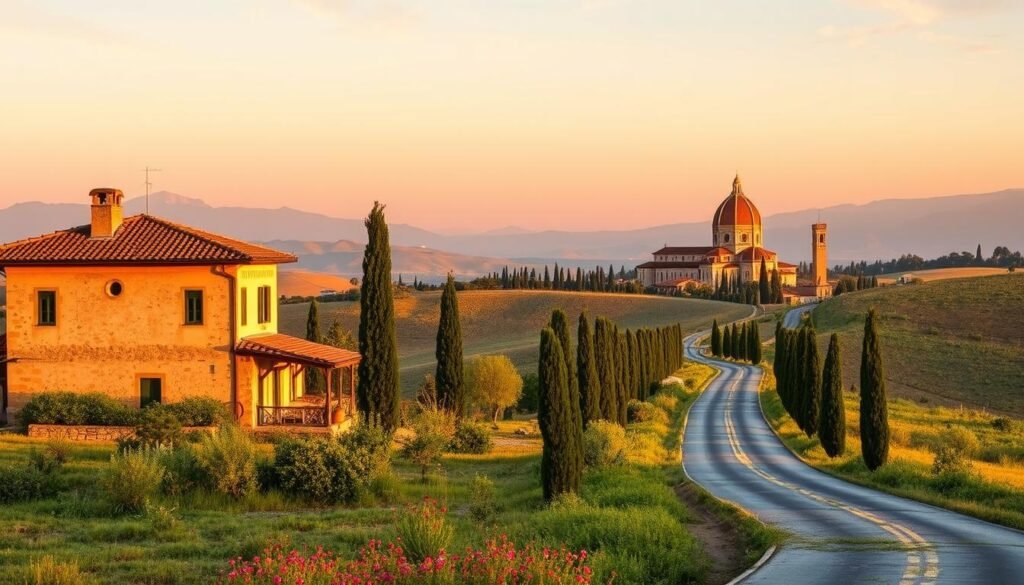Surprising fact: more travelers now consider April–May and late September–October the sweet spot, making those shoulder months crucial for planning.
I write from experience: choosing when to go depends on whether you chase warm days, low prices, or empty streets. High season runs May through September and brings long daylight and beaches. Shoulder season—March–April and October–November—offers milder weather, fewer crowds, and shorter lines at top attractions.
If you like quiet piazzas and deals, winter is a smart pick. The north turns snowy and ski towns buzz, while the south stays cool in the 40s–50s °F. Summer delivers heat and crowds; July–August can top 100°F in Rome and Naples.
My advice: match your priorities to the season and lock in bookings early, since high-demand months now stretch longer across the year. That way, your trip feels planned, relaxed, and well-timed for the destination you want.
Key Takeaways
- Shoulder months (April–May, late Sept–Oct) balance weather, crowds, and prices.
- High season (May–Sept) gives long days but more visitors and higher costs.
- Winter offers low crowds and snowy Alps or milder southern climates.
- Summer can be very hot, especially in southern cities like Rome and Naples.
- Book earlier now that demand stretches across more months in the year.
How I Decide the Best Time to Visit Italy: Seasons, Crowds, and Weather at a Glance
My planning begins with a quick season check that ranks warmth, crowds, and events. I sort months into high (May–September), shoulder (March–April, October–November), and low (December–February) bands. That gives me a base for choosing the right period.
I compare regional temperatures and conditions. Southern cities can top 100°F in July–August, while the north — think Venice and Lake Como — often sits in the 60s–70s°F in summer. Microclimates matter: lake breezes and alpine elevations change things city by city.
Crowd patterns shape my museum and attractions plans. Spring and fall reduce lines, so I schedule heavy gallery days then. In winter I avoid crowds, but I check coastal and island services since some areas scale back or close.
| Region | Typical summer temperatures | Crowd trend (season) |
|---|---|---|
| North (Venice, Lakes) | 60s–70s°F | Moderate in summer; lighter in spring/fall |
| Central (Rome, Florence) | 70s–90s°F | High May–Sept; shoulder months best for museums |
| South & Coast | 80s–100+°F | Very busy in summer; some resorts close in low season |
I balance my tolerance for crowds against expected temperatures and then lock in tickets for key sites. That simple method keeps plans realistic and keeps my energy up for walking and exploring.
Best Practices by Season: When Italy Shines for Fewer Crowds, Ideal Temperatures, and Savings
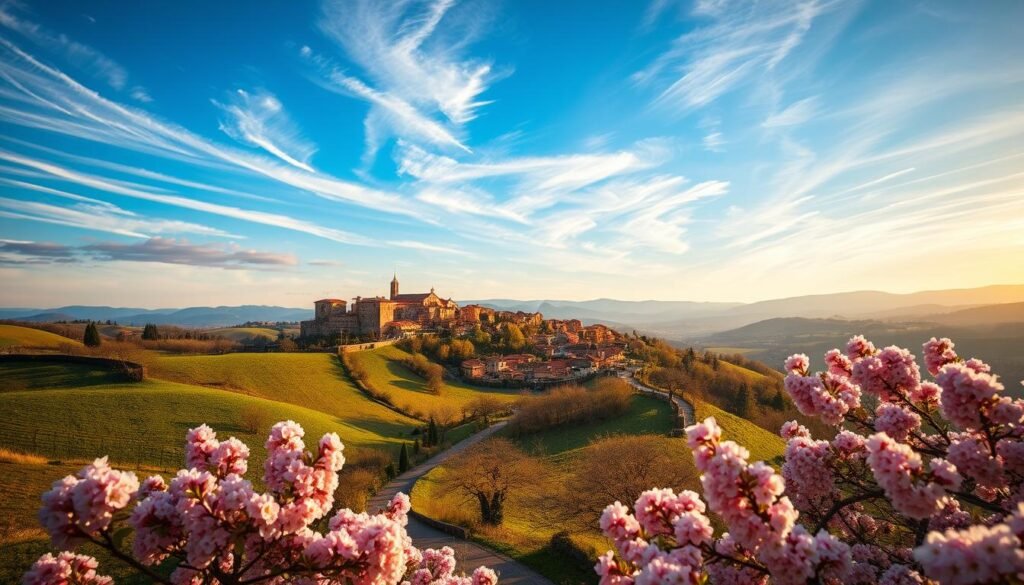
Seasons offer different perks — pick the one that matches your goals. I favor April–May and late September–October for a true balance of weather, crowds, and prices. In those months I can stack museums, walks, and coastal time without frantic pacing.
Spring (March–May): I use spring for city breaks. Mild days, blooming parks, and shorter lines let me hit top sites and outdoor cafés in one day.
Summer (June–August): Summer brings heat and higher prices. I always book accommodations and activities well in advance, start big visits early, and plan quiet afternoons.
Fall (September–November): September–October is harvest season. Wine events and warm coastal waters make food and boat days delightful.
Winter (December–February): Winter means lowest crowds and better prices in cities. I head north for Dolomites skiing and quieter museum days, but I watch holiday spikes around Christmas and New Year’s.
“Aim October–April for fewer crowds, but check holiday dates since December can be busy.”
| Season | Why I pick it | Practical tip |
|---|---|---|
| Spring | Comfortable temps, short lines | Pack light layers; reserve museum slots |
| Summer | Long days, higher prices | Book well in advance; plan siestas |
| Fall | Festivals, warm waters | Schedule wine events and coastal outings |
| Winter | Low crowds, alpine fun | Check alpine hotel openings and holidays |
best time to visit italy for Your Interests: Cities, Beaches, Wine, and Mountains
I start by matching my interests with seasons so I get the most from each region. Cities, coastlines, vineyards, and mountains each have ideal windows that cut crowds and boost enjoyment.
Cities and top attractions
I schedule Rome, Florence, and Venice in spring or early fall. Fewer visitors mean shorter queues and more relaxed walks between attractions. I can linger in cafés and cover museums without rushing.
Amalfi Coast and beaches
Late spring and early fall work best for the amalfi coast and other beach areas. The waters stay pleasant and most services run. Note that many seaside villages scale back from late October through early April.You can learn more about best-time-to-visit-glacier-national-park
Wine and harvest season
I chase the harvest in September–October for lively festivals and cellar visits. I also book April–June for tasting days when vineyards are green and roads feel calm. Wine events add flavor and local energy.
Dolomites and the north
I split mountain plans by season: winter for skiing, summer for hiking and cable cars. I always check whether hotels or lifts close in shoulder months so my itinerary stays flexible.
| Area | Ideal season | What I check |
|---|---|---|
| Cities & attractions | Spring, early fall | Museum slots, heat levels |
| Coast & beaches | Late spring, early fall | Ferry schedules, village openings |
| Wine regions & mountains | Sept–Oct; winter/summer | Festival dates, lift operations |
- I pair nearby regions—Florence plus Chianti or Venice plus the lakes—to maximize weather and minimize travel friction.
- Always build buffers for boats and lifts so a delayed schedule won’t derail plans.
Prices, Availability, and Booking Strategy: My Playbook for Flights, Hotels, and Activities
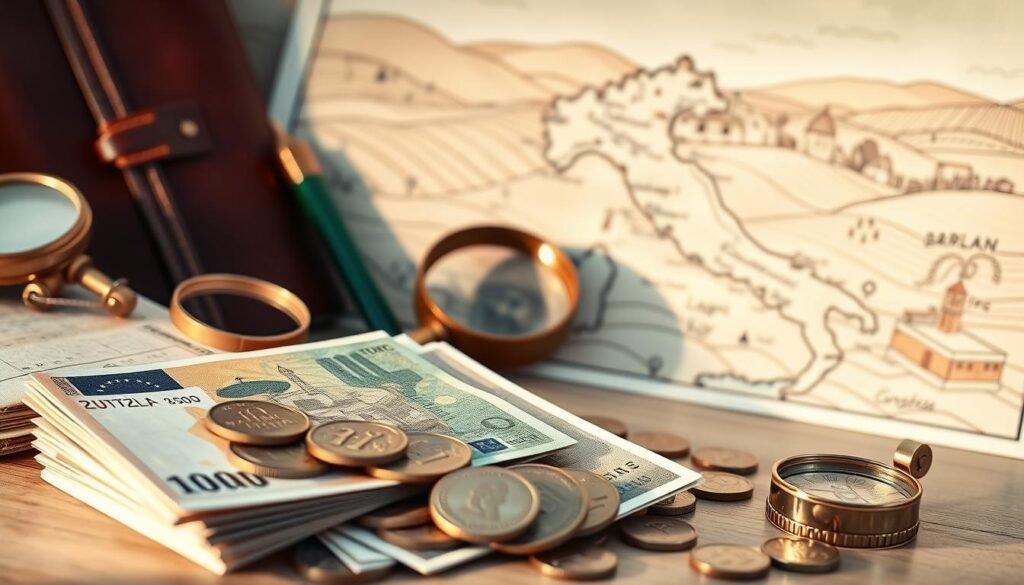
I treat booking as a small set of rules that saves money and stress. I scan rates across the year, then pick dates that match my budget and energy.
Budget-friendly months usually fall between October and April. During those months I find lower prices in major cities and regions, especially Rome and Florence. That window gives me leverage when bundling flights and rooms.
Reserve early for high demand
I lock summer stays, coastal towns, and top sites well in advance. Booking ahead secures better time slots for activities and avoids last-minute price spikes.
- I hunt airfare and hotel deals in October–April for the best prices and options.
- I consider a cruise as an alternative vacation path in summer when land hotels are pricey.
- I add small-town overnights (Molise or similar) to keep costs low and feel local.
- I compare flexible dates and track cancellation rules so my trip stays adaptable.
| Focus | When I book | Why |
|---|---|---|
| Flights | 6–12 months ahead | Better fares |
| Hotels | 3–9 months (summer earlier) | More choices |
| Activities & sites | As soon as tickets release | Skip lines & secure times |
Weather and Regions: Planning Around Heat, Rain, and Seasonal Closures
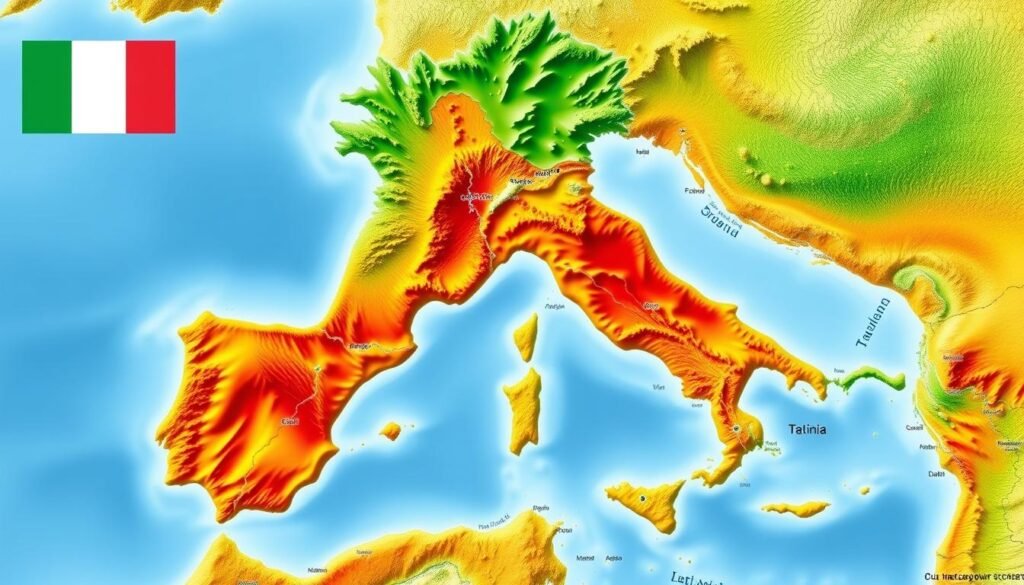
I map my days by comparing heat, rain chances, and operating seasons across regions. That lets me move between the cooler lakes and alpine areas and hotter southern cities with purpose.
North vs. south
The north often stays in the 60s–70s°F in peak summer, which is ideal for hikes and lake days. Southern urban areas can exceed 100°F in July–August, so I schedule big city walks in spring or fall when possible.
Holidays and events to keep in mind
I track Carnival (late Feb–Mar), Easter, and Ferragosto on August 15. These holidays affect opening hours, crowds, and prices. I either join local festivals or shift dates to avoid packed museums and transit.You can learn more about best-national-parks-to-visit-in-the-us
Packing basics and dress codes
I pack light layers, rain protection for winter, and breathable clothing for spring–fall. In summer I add a sun hat and sunscreen. I always carry a modest outfit for churches so I don’t have to return to my hotel.
- I plan moves across the country with temperatures in mind and block indoor museum time during midday heat.
- I confirm seasonal closures for alpine lifts and small coastal services before I finalize routes.
best time planning helps me balance weather, crowds, and schedules across this country.
| Area | Typical summer temps | Note |
|---|---|---|
| North (lakes, Alps) | 60s–70s°F | Great for outdoor days |
| Central (cities) | 70s–90s°F | Use museums at midday |
| South & coast | 80s–100+°F | Prefer shoulder months |
Shoulder Months I Love Most: April-June and September-October
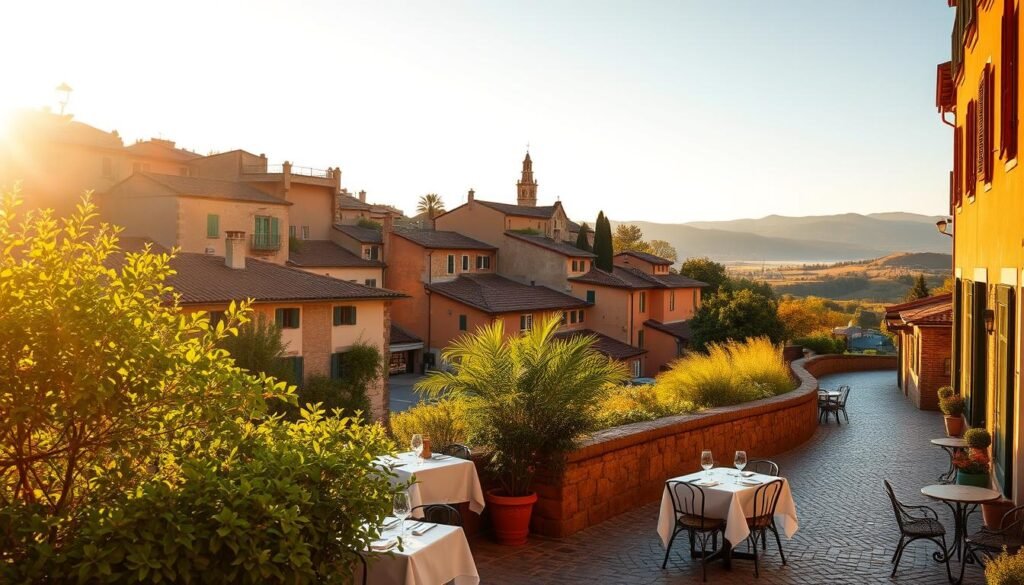
For relaxed days and kinder sun, I aim for April–June or late September–October. These shoulder months give mild spring greenery, warm afternoons, and noticeably fewer crowds in popular areas.
I map city mornings for Rome, Florence, and Venice so I walk at a calm pace and enjoy golden-hour evenings. I then add coastal stops—often the Amalfi Coast—because the sea can stay warm into October and promenades feel peaceful.
Harvest season is a bonus: late September and October brim with wine festivals and market stalls. I leave space in my itinerary for tastings and small events across the country.
- I plan rail days between cities when stations are less hectic.
- I book key museums and dinners but keep the rest of the trip flexible.
- I build rest hours so I can savor cafes and viewpoints without rush.
| Period | Why I pick it | Practical tip |
|---|---|---|
| April–June | Spring blooms, mild sun | Pack layers |
| September–October | Warm seas, festivals | Reserve winery tours |
| Shoulder gaps | Fewer crowds, easier logistics | Book key entries |
For a compact planning guide, see a short anchor on time visit italy that I use when choosing exact dates.You can learn more about best-places-to-visit-in-europe
Conclusion
I close my planning by aiming for windows that let me walk cities, savor villages, and still enjoy a beach afternoon.
If you want comfort, manageable crowds, and flexible days, the shoulder months—April–May and late September–October—deliver across the country. Outside peak summer, prices often soften and small towns feel more welcoming.
Match your heat tolerance to likely temperatures, set a few anchors in advance (lodging and marquee tickets), then leave space for winery tours, harvest markets and local festivals. That way you can savor both attractions and quiet villages.
With a simple framework—season tradeoffs, weather checks, and a couple booked must-dos—your trip italy will feel tailored for the year you travel. Enjoy the planning and the places you find along the way.


